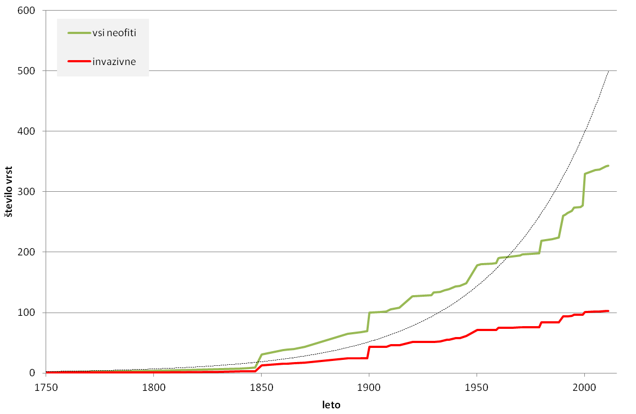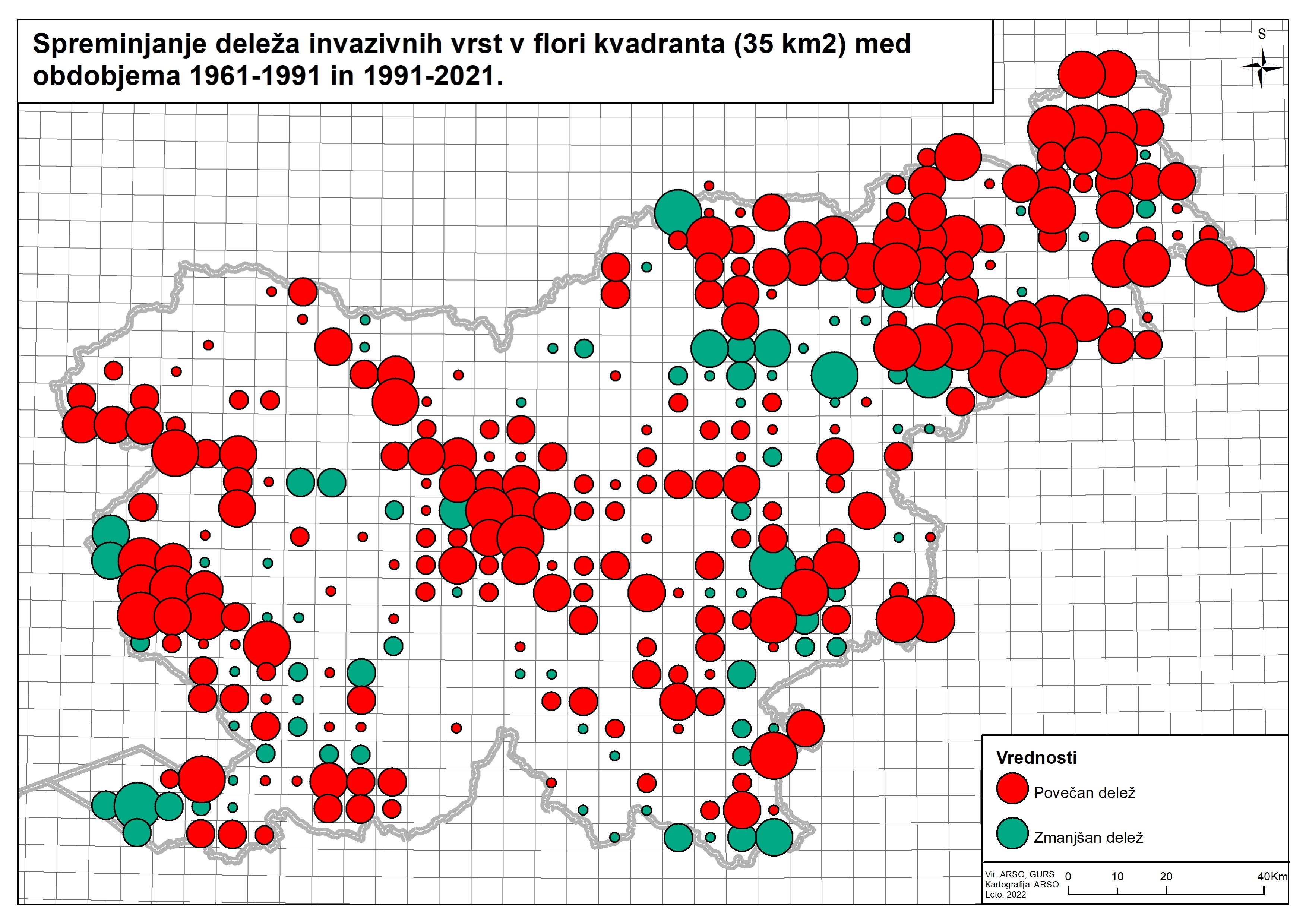[NB09] Plants – invasive species

Key message

The share of present invasive species (eg. Robinia pseudacacia, Ailanthus altissima, Buddleja davidii, Erigeron annuus) in the last decade shows an increasing trend. An increase in the share of invasive species is evident along the great lowland rivers Sava, Mura and Drava, as well as along the Kolpa river. In higher areas of Slovenia, particularly in the Alps and the Dinaric region, invasive species are very few or entirely absent. However, a notable increase in their share along the western border of the Dinaric region raises concerns. Hot spots for new invasive plant species are predominantly ornamental gardens concentrated in lowland urban areas. Mitigation and prevention measures against invasives are slowly developing so we will be able to monitor their effect in the future.
Definition
From the perspective of nature protection, invasive alien species are generally those expanding spontaneously in their new natural or semi-natural environment and consequently causing serious disturbances/changes in the functioning of the ecosystem.
The indicator shows the comparison between periods by share of invasive species, based on the available data. For the calculation of shares, all available data from the period 1961–2021 were taken into account, while the comparison was made between the periods 1961–1991 and 1991–2021 (total approximately 430,000 pieces of data).
Charts
Podatkovna zbirka: Flora Slovenije, 2022
Podatkovna zbirka: Flora Slovenije, 2022
Goals
- to stop or stabilize the trend of the increasing share of invasive species in local flora;
- by 2020, invasive alien species and pathways are identified
- by 2025, invasive alien species and pathways are controlled
Comment
The share of invasive species recorded in the last three decades is considerably higher than earlier (red circles), while the number of quadrants where the share of invasive species decreased is considerably smaller (empty circles). Each circle size is proportionate to the difference between the shares, meaning that quadrants with the same share of invasive species in both periods seem to have no invasive species, as the trend is 0 (zero). The increase in the share of invasive species over the last decade is notable.
Such a trend is expected, but certainly raises concern. In addition, a local decrease in the share of invasive species does not reflect the real situation due to various degrees to which flora was assessed in individual quadrants in the past decades.
In Slovenia, invasive species that spread spontaneously and, consequently, cause disturbances and changes in the functioning of ecosystems are not adequately covered by legislation. General measures (e.g. restriction of their introduction and expansion) in cases of massive occurrences of invasive species have also not been put in place. One exception is ragweed that has to be controled since 2010 and recently a group of invasive species of EU concern (Regulation (EU) No 1143/2014). Those were covered by another indicator.
Distribution ranges and abundance of already widespread IAS are rising despite some local efforts and that is alarming. On the other hand some important steps towards early detection and eridacation have been done recently as is shown by the cases of kudzu (Pueraria lobata) and giant hogweed (Heracleum mantegazzianum), several small populations of Asclepias syriaca have also been removed and also the only known population of Lysichiton americanus.










